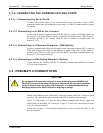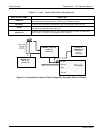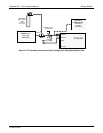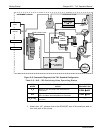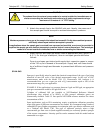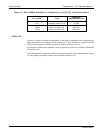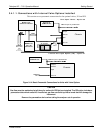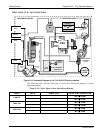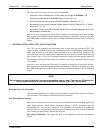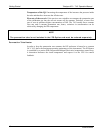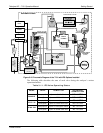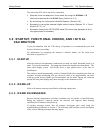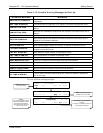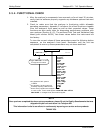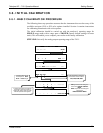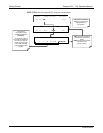
Teledyne API – T101 Operation Manual Getting Started
47
The state of the zero/span valves can also be controlled:
Manually from the analyzer’s front panel by using the SIGNAL I/O
controls located under the DIAG Menu (Section 4.6.1),
By activati
ng the instrument’s AutoCal feature (Section 4.4.2),
Remotely
by using the external digital control inputs (Section 5.1.1.2 and
Section 6.7.1), or
Remotely through the R
S-232/485 serial I/O ports (see Appendix A for the
appropriate commands).
Sources of zero and span gas flow must be capable of supplying at least 600 cm
3
/min.
Both supply lines should be vented outside of the analyzer’s enclosure. In order to prevent
back-diffusion and pressure effects, these vent lines should be between 2 and 10 meters in
length.
INTERNAL ZERO/SPAN (IZS) VALVE GAS FLOW
The T101 can be equipped with an internal zero air and span gas generator (IZS). This
option includes a heated enclosure for a permeation tube for containing the calibration gas
under high pressure (not included; H
2
S perm tubes can be ordered from Teledyne API;
SO
2
perm tubes must be ordered from a manufacturer), an external scrubber for producing
zero air and a set of valves for switching between the sample gas inlet and the output of
the zero/span subsystem, functionally very similar to the valves included in the zero/span
valve option.
Sources of zero and span gas flow must be capable of supplying at least 600 cm
3
/min.
Both supply lines should be vented outside of the analyzer’s enclosure. In order to prevent
back-diffusion and pressure effects, these vent lines should be between 2 and 10 meters in
length.
NOTE
The instrument can only be fitted with one type of permeation tube at a time. Therefore the IZS option can
only be used to calibrate or check the instrument for one gas, H
2
S or SO
2
, but not both.
External Zero Air Scrubber
The IZS option includes an external zero air scrubber assembly that removes all H
2
S the
zero air source. The scrubber is filled with activated charcoal.
The Permeation Source
Span gas is created when zero air passes over a permeation tube containing liquid H
2
S
under high pressure, which slowly permeates through a PTFE membrane into the
surrounding air. The speed at which the H
2
S permeates the membrane is called the
effusion rate. The concentration of the span gas is determined by three factors: membrane
size, sample gas temperature, and zero air flow rate
Size of the membrane: The larger the area of the membrane, the more permeation
occurs.
07266B DCN6485



